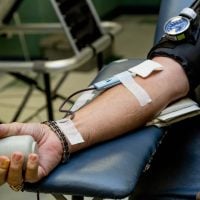Education is a fundamental human right and a powerful catalyst for social change, particularly for girls. Investing in girls’ education programs is not merely an act of charity; it is a strategic investment in the future of communities and nations. Educated girls are more likely to become empowered women who contribute positively to their families and societies.
They tend to marry later, have fewer children, and are more likely to ensure that their own children receive an education. This creates a ripple effect that can lead to improved health outcomes, economic growth, and reduced poverty levels. Furthermore, girls who receive an education are more likely to participate in civic activities and advocate for their rights, fostering a culture of equality and justice.
Moreover, the importance of girls’ education extends beyond individual benefits; it has profound implications for global development. The United Nations recognizes that achieving gender equality in education is essential for sustainable development. When girls are educated, they are better equipped to tackle issues such as climate change, health crises, and economic instability.
They become leaders in their communities, driving innovation and change. Thus, investing in girls’ education programs is not just a moral imperative; it is a necessary step toward achieving broader developmental goals, including the Sustainable Development Goals (SDGs) set forth by the UN.
Challenges in Securing Funding for Girls’ Education Programs
Limited Understanding of Girls’ Education Challenges
Many funding bodies may not fully understand the unique challenges faced by girls in accessing education, leading to a misalignment between funding priorities and the actual needs on the ground. Another challenge is the perception that girls’ education programs are less urgent compared to other pressing issues such as health crises or economic development. This can result in a lack of visibility and support for initiatives aimed at improving educational access for girls.
Complexities of Proposal Writing and Grant Applications
Furthermore, many organizations struggle with the complexities of proposal writing and grant applications, which can be daunting and time-consuming. The need for comprehensive data and evidence-based approaches can also hinder smaller NGOs that may lack the resources to conduct extensive research or evaluations.
Overcoming Funding Challenges
To overcome these funding challenges, it is essential to raise awareness about the importance of girls’ education and the unique obstacles that girls face in accessing education. By building partnerships with donors and funding bodies, organizations can work together to prioritize girls’ education and ensure that initiatives receive the necessary support to make a meaningful impact.
Strategies for Securing Funding for Girls’ Education Programs
To overcome these challenges, NGOs must adopt strategic approaches to secure funding for girls’ education programs. One effective strategy is to build strong relationships with potential donors by demonstrating the impact of their work through compelling storytelling and data-driven results. By sharing success stories and testimonials from beneficiaries, organizations can create an emotional connection that resonates with donors and highlights the importance of their contributions.
Additionally, NGOs should diversify their funding sources by exploring various avenues such as government grants, private foundations, corporate sponsorships, and crowdfunding platforms. This not only increases the chances of securing funds but also reduces dependency on a single source of income. Collaborating with other organizations can also amplify efforts; by pooling resources and expertise, NGOs can present a united front that showcases the collective impact of their initiatives on girls’ education.
Moreover, NGOs should invest in capacity building to enhance their proposal writing skills and develop robust monitoring and evaluation frameworks. This will enable them to present well-structured proposals that clearly outline objectives, methodologies, and expected outcomes. Engaging with local communities to understand their needs and incorporating their feedback into program design can also strengthen proposals and demonstrate a commitment to addressing the specific challenges faced by girls in accessing education.
Successful Examples of Securing Funding for Girls’ Education Programs
There are numerous examples of organizations that have successfully secured funding for girls’ education programs through innovative strategies. One notable case is the Malala Fund, co-founded by Nobel laureate Malala Yousafzai. The organization has effectively leveraged Malala’s personal story and global recognition to attract significant funding from various sources, including governments, private donors, and corporate partners.
By focusing on advocacy and raising awareness about the importance of girls’ education, the Malala Fund has mobilized resources to support educational initiatives in countries where girls face systemic barriers to schooling. Another inspiring example is Room to Read, an NGO dedicated to promoting literacy and gender equality in education across developing countries. Room to Read has successfully partnered with corporations and foundations to secure funding for its programs.
By demonstrating measurable outcomes and impact through rigorous monitoring and evaluation processes, the organization has built trust with donors and showcased the effectiveness of its initiatives. Their approach emphasizes collaboration with local communities to ensure that programs are culturally relevant and sustainable. These examples illustrate that with creativity, persistence, and a focus on impact, NGOs can successfully secure funding for girls’ education programs even in challenging environments.
The Role of Donors and Partnerships in Securing Funding for Girls’ Education Programs
Donors play a crucial role in supporting girls’ education programs by providing the necessary financial resources to implement initiatives effectively. However, their involvement goes beyond mere funding; they can also offer valuable expertise, networks, and advocacy support. Establishing partnerships between NGOs and donors can create synergies that enhance program effectiveness and sustainability.
For instance, donors with experience in education can provide technical assistance or capacity-building support to NGOs, helping them improve their program design and implementation. Furthermore, collaborative partnerships among NGOs can amplify efforts to secure funding for girls’ education programs. By working together, organizations can share best practices, pool resources, and present a unified message to potential donors about the importance of investing in girls’ education.
This collective approach not only increases visibility but also demonstrates a commitment to addressing systemic issues affecting girls’ access to education. In addition to traditional funding sources, innovative financing mechanisms such as social impact bonds or blended finance models can also be explored. These approaches allow donors to invest in programs with the potential for measurable social outcomes while also generating financial returns.
By engaging with diverse stakeholders—including governments, private sector actors, and philanthropic organizations—NGOs can create a robust ecosystem that supports sustainable funding for girls’ education initiatives.
The Impact of Securing Funding for Girls’ Education Programs
Securing funding for girls’ education programs has far-reaching impacts that extend beyond individual beneficiaries. When girls have access to quality education, they are empowered to break the cycle of poverty and contribute positively to their communities. Educated women are more likely to participate in the workforce, leading to increased economic productivity and growth.
This not only benefits families but also strengthens local economies and contributes to national development. Moreover, investing in girls’ education has significant social benefits. Educated women tend to prioritize health and well-being within their families, leading to improved health outcomes for future generations.
They are more likely to advocate for their rights and participate in decision-making processes within their communities, fostering a culture of equality and empowerment. As more girls gain access to education, societal norms begin to shift, challenging traditional gender roles and promoting gender equality. In conclusion, securing funding for girls’ education programs is essential for creating lasting change in communities around the world.
By understanding the challenges faced in obtaining funding and implementing effective strategies, NGOs can enhance their ability to attract resources that support these vital initiatives. The role of donors and partnerships cannot be overstated; together, they can drive progress toward achieving gender equality in education and empower future generations of women leaders. Ultimately, investing in girls’ education is an investment in a brighter future for all.









































